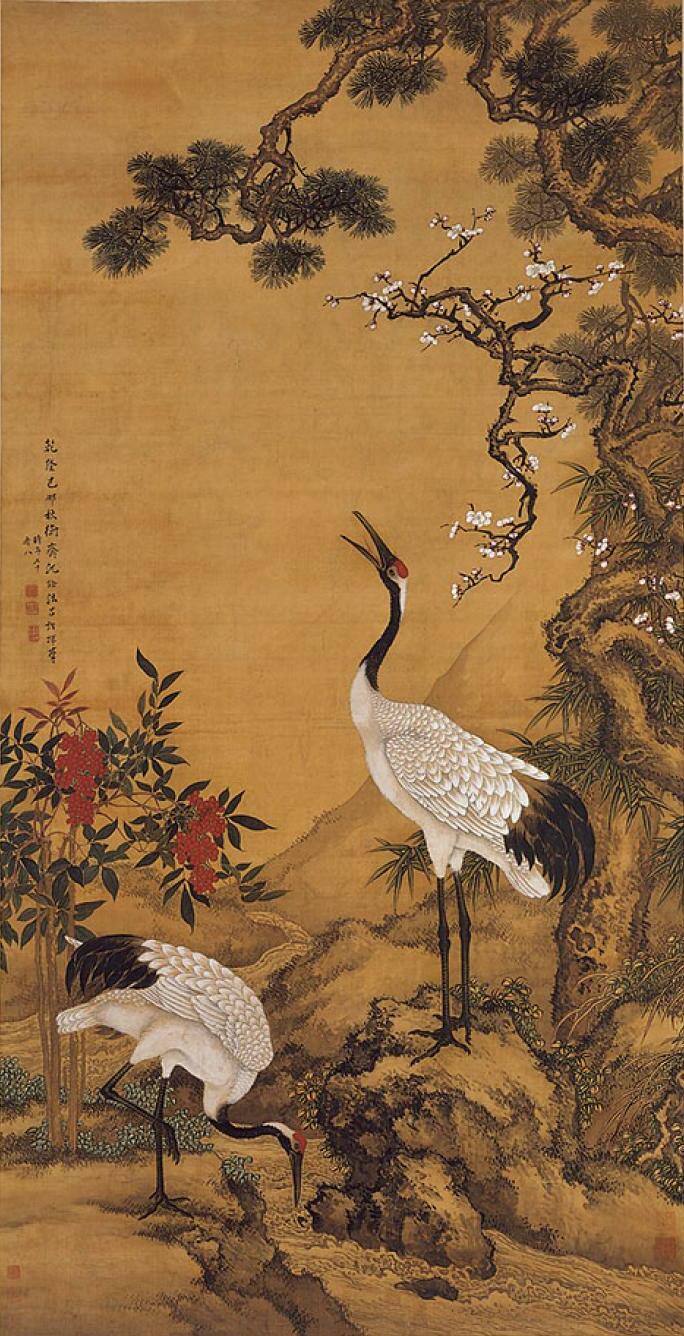Nanpin school on:
[Wikipedia]
[Google]
[Amazon]
 The Nanpin school (南蘋派 ''Nanpin-ha'') was a school of painting which flourished in
The Nanpin school (南蘋派 ''Nanpin-ha'') was a school of painting which flourished in
 The Nanpin school (南蘋派 ''Nanpin-ha'') was a school of painting which flourished in
The Nanpin school (南蘋派 ''Nanpin-ha'') was a school of painting which flourished in Nagasaki
is the capital and the largest city of Nagasaki Prefecture on the island of Kyushu in Japan.
It became the sole port used for trade with the Portuguese and Dutch during the 16th through 19th centuries. The Hidden Christian Sites in the ...
during the Edo period
The or is the period between 1603 and 1867 in the history of Japan, when Japan was under the rule of the Tokugawa shogunate and the country's 300 regional '' daimyo''. Emerging from the chaos of the Sengoku period, the Edo period was characteriz ...
.
Etymology
The school takes its name from Nanpin, theart name
An art name (pseudonym or pen name), also known by its native names ''hào'' (in Mandarin), ''gō'' (in Japanese), ''ho'' (in Korean), and ''tên hiệu'' (in Vietnamese), is a professional name used by East Asian artists, poets and writers. The ...
of Chinese painter Shen Quan (1682–1760), an artist who painted in the Ming academic style.
History
Shen Quan arrived in Nagasaki on the 37th ship on December 3, 1731, and left Japan two years later, on September 18, 1733. He specialised inbird-and-flower painting
Bird-and-flower painting, called () in Chinese, is a kind of Chinese painting with a long tradition in China and is considered one of the treasures of Chinese culture. The was named after its subject matter. It originated in the Tang dynasty wh ...
(Ch: ''huaniao hua'', J: ''kachōga''), one of the major artistic subjects, especially among professional Chinese painters.
The commercial activity in the port of Nagasaki facilitated the spread of Western knowledge in Japan. Japanese people were also particularly interested in ancient Chinese culture. Paintings of the Nanpin school show flora and fauna that are not just "realistic", but styled as they appear in Chinese and European treatises.
In the 18th century, Japanese people became very interested in Western natural sciences, even if that did not mean a break from Chinese tradition.
Chinese and Western treatises on natural sciences could have played a key role in the spread of knowledge on subjects such as botany, zoology, and mineralogy, and that the images featured in these treatises might have inspired artists to choose and create new representations of bird-and-flower. That is why scholar Meccarelli has called the style of the Nanpin school "flora and fauna decorative painting'.
In the Nanping painting school, the decorative aspect was even more emphasised, because paintings had to satisfy the taste of merchants.Charles D. Sheldon, 1973, ''The Rise of the Merchant Class in Tokugawa Japan 1600–1868: An Introductory Survey'', New York: Russell and Russell
Notable artists
* Kumashiro Yūhi (1712–1772) *Zheng Pei Zheng may refer to:
*Zheng (surname), Chinese surname (鄭, 郑, ''Zhèng'')
*Zheng County, former name of Zhengzhou, capital of Henan, China
*Guzheng (), a Chinese zither with bridges
*Qin Shi Huang (259 BC – 210 BC), emperor of the Qin Dynasty, ...
(fl. mid-18th century)
* Sō Shiseki
was a Japanese painter of the Nagasaki and Nanpin schools.
Originally from Edo, he spent some time in Nagasaki, where he studied under the Chinese painter Song Ziyan, who was known as Sō Shigan in Japanese. The name Sō Shiseki is an art-name, ...
(1715–1786)
See also
*Nanga (Japanese painting)
, also known as , was a school of Japanese painting which flourished in the late Edo period among artists who considered themselves literati, or intellectuals. While each of these artists was, almost by definition, unique and independent, the ...
References
{{Authority control Nanga